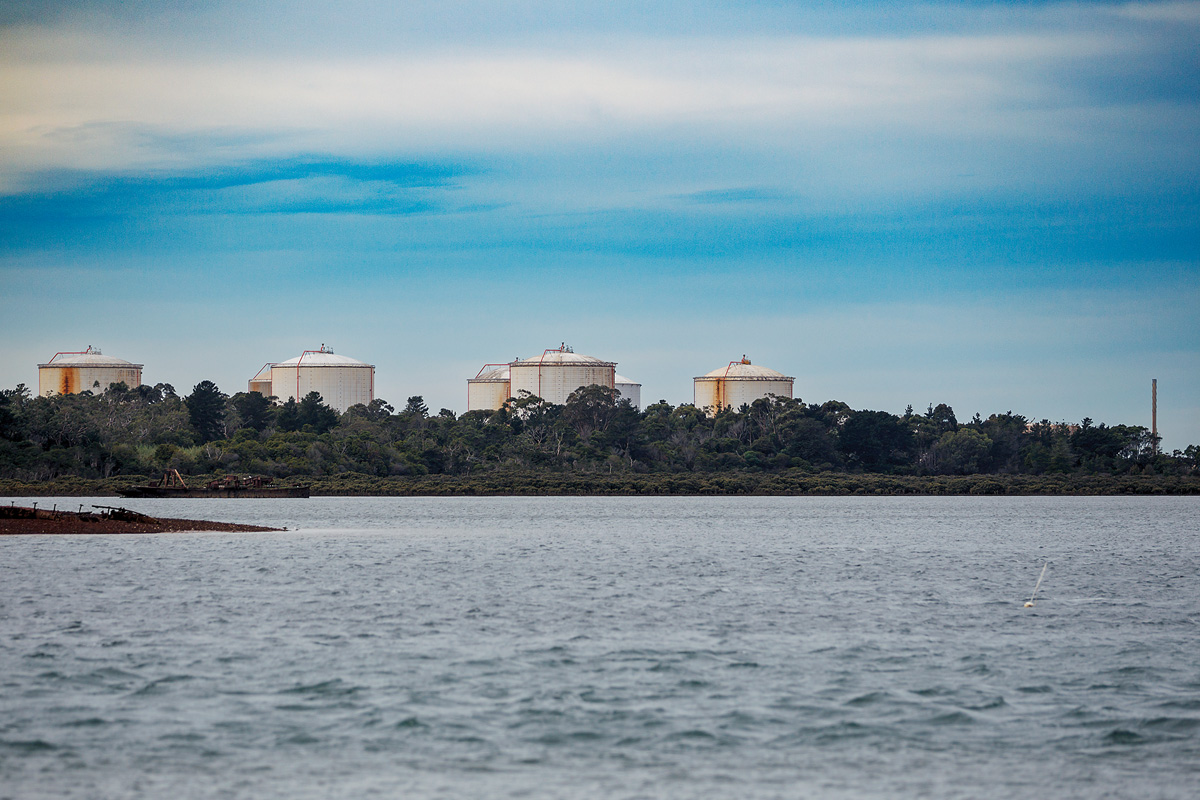MORNINGTON Peninsula Shire has called on the state government to investigate health risks and environmental impacts of a plan by Esso Resources to use ethane gas to generate electricity.
Esso has an oversupply of ethane, a by-product from natural gas used at its fractionation plant at Long Island, Hastings.
The company says burning the gas – or flaring-off – is the alternative to setting up an ethane-driven electricity power plant.
It says the plant will produce enough electricity to power 35,000 household a year will increase the peninsula’s greenhouse gas emissions by six per cent a year.
While the decision on Esso’s power generation plan rests with Planning Minister Richard Wynne the shire, relegated to being classed as “a stakeholder”, can make a submission.
At the Monday 20 June planning services committee meeting councillors voted six to three to oppose the plan despite a 13-page officer’s report which stated, “the proposal’s climate change impacts are acceptable”.
“Further, it is considered that environmental and amenity impacts resulting from the proposal do not warrant objection,” the report by principal planner Lachlan Howard stated.
“Here we go again, industry thinking it can pull the wool over our eyes,” Cr Lisa Dixon said, listing the plan along with past proposals at Crib Point for a bitumen plant and AGL’s failed bid for a gas import terminal.
Dixon said the report “appears light on detail” and did not mention the need for an EES, quantative risk assessment, possible atmospheric pollution, Western Port’s internationally-recognised Ramsar wetlands or the need for an exclusion zone for aircraft, with Tyabb Airfield being 2.5 kilometres away.
“To me, that is disgusting, really disgraceful.”
Dixon said Esso held a public information session “but no one there could answer the questions being asked, which I find very disappointing”.
Cr Steve Holland said by opposing Esso’s electricity generation plan council was “quickly cementing its reputation as the anti-gas shire”.
“No gas, no electricity, no jobs — it’s back to the dark ages,” he said.
“My gut feeling is that the state government will probably approve this … you’re opposing an electricity generation project for the sake of it and against the recommendation of our officers.
“All this does is signify that the council is happy to pump gas into the atmosphere, but not turn it into electricity. The mind boggles.”
Cr David Gill likened Esso’s plan to Kawasaki Heavy Industries use of brown coal to produce hydrogen to be exported from the Port of Hastings to Japan.
Gill said Kawasaki’s plan – backed by $50 million each from the state and federal governments – “leaves the coal behind, for us to have to deal with”.
He said it was “interesting” that the shire’s “team” did not see any objection to increasing the peninsula’s annual greenhouse emissions by six per cent.
The proposal also required the “almost one hectare of [native] vegetation removal for, of all things, defendable space”.
“Some people might not be defended if this goes wrong,” Gill said.
“Gas is not the future.”
Esso’s decision to generate electricity follows a drop in demand for ethane by Altona-based plastic manufacturer, Qenos.
Three 14.7 metre high turbine generators – with a 15m high vent stack – are planned to generate up to 40 megawatts, although this would fluctuate along with the ongoing demand for ethane.
The power station would include a switch yard, transformer system, offices and parking for up to 80 vehicles. A 45m long five m high “acoustic noise wall” would be built on the site’s southern boundary.
Cr Susan Bissinger said the state government was “very anti-gas” which the federal government was “pro-gas”.
“I’m not advocating for gas in any way, just reading what I see, and what I see is parties that are warring with each other, and you wonder who’s going to win out of it,” she said.
Using ethane to generate electricity was the “lesser of two evils”.
“We either flare-off the ethane, let it go up into the atmosphere and get nothing out of it, or we process it into electricity,” Bissinger said.
“No one’s offering to use the ethane to make other things. I’d rather have 35,000 houses given electricity every year through this process than have nothing, and just watch the flare go off all the time.”
First published in the Southern Peninsula News – 28 June 2022




